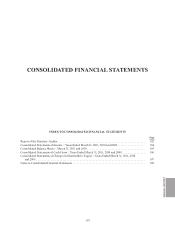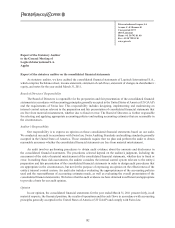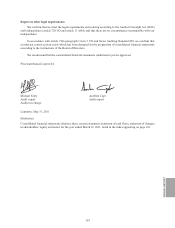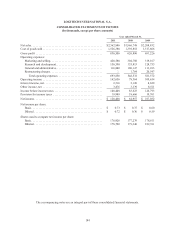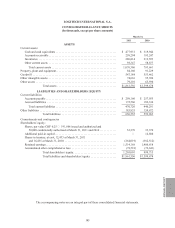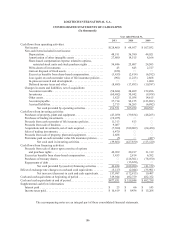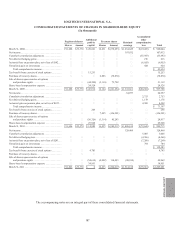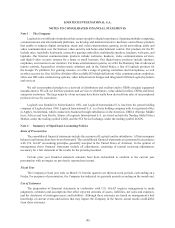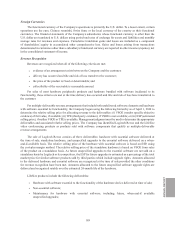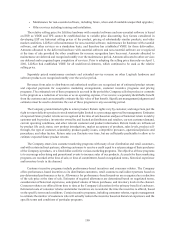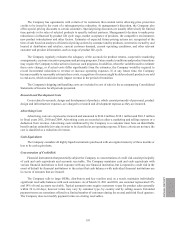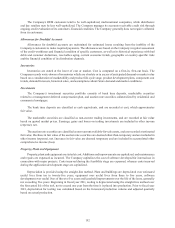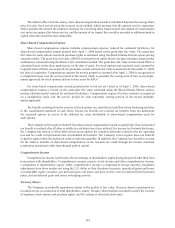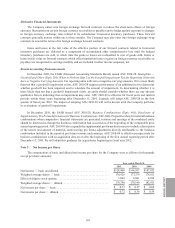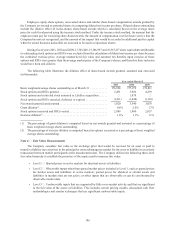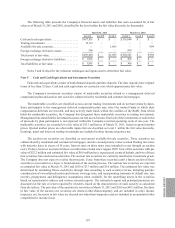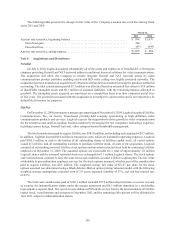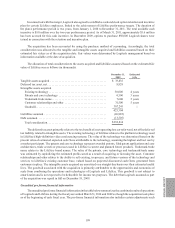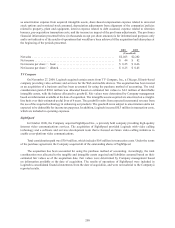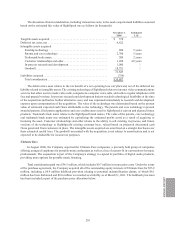Logitech 2011 Annual Report Download - page 203
Download and view the complete annual report
Please find page 203 of the 2011 Logitech annual report below. You can navigate through the pages in the report by either clicking on the pages listed below, or by using the keyword search tool below to find specific information within the annual report.
ANNUAl REPORT
191
The Company has agreements with certain of its customers that contain terms allowing price protection
credits to be issued in the event of a subsequent price reduction. At management’s discretion, the Company also
offers special pricing discounts to certain customers. Special pricing discounts are usually offered only for limited
time periods or for sales of selected products to specific indirect partners. Management’s decision to make price
reductions is influenced by product life cycle stage, market acceptance of products, the competitive environment,
new product introductions and other factors. Estimates of expected future pricing actions are recognized at the
time of sale based on analyses of historical pricing actions by customer and by products, inventories owned by and
located at distributors and retailers, current customer demand, current operating conditions, and other relevant
customer and product information, such as stage of product life-cycle.
The Company regularly evaluates the adequacy of the accruals for product returns, cooperative marketing
arrangements, customer incentive programs and pricing programs. Future market conditions and product transitions
may require the Company to take action to increase such programs. In addition, when the variables used to estimate
these costs change, or if actual costs differ significantly from the estimates, the Company would be required to
record incremental reductions to revenue or increase operating expenses. If, at any future time, the Company
becomes unable to reasonably estimate these costs, recognition of revenue might be deferred until products are sold
to end-users, which would adversely impact revenue in the period of transition.
The Company’s shipping and handling costs are included in cost of sales in the accompanying Consolidated
Statements of Income for all periods presented.
Research and Development Costs
Costs related to research, design and development of products, which consist primarily of personnel, product
design and infrastructure expenses, are charged to research and development expense as they are incurred.
Advertising Costs
Advertising costs are expensed as incurred and amounted to $184.8 million, $118.1 million and $161.5 million
in fiscal years 2011, 2010 and 2009. Advertising costs are recorded as either a marketing and selling expense or a
deduction from revenue. Advertising costs reimbursed by the Company to a customer must have an identifiable
benefit and an estimable fair value in order to be classified as an operating expense. If these criteria are not met, the
cost is classified as a reduction of revenue.
Cash Equivalents
The Company considers all highly liquid instruments purchased with an original maturity of three months or
less to be cash equivalents.
Concentration of Credit Risk
Financial instruments that potentially subject the Company to concentrations of credit risk consist principally
of cash and cash equivalents and accounts receivable. The Company maintains cash and cash equivalents with
various financial institutions to limit exposure with any one financial institution, but is exposed to credit risk in the
event of default by financial institutions to the extent that cash balances with individual financial institutions are
in excess of amounts that are insured.
The Company sells to large OEMs, distributors and key retailers and, as a result, maintains individually
significant receivable balances with such customers. As of March 31, 2011 and 2010, one customer represented 13%
and 14% of total accounts receivable. Typical payment terms require customers to pay for product sales generally
within 30 to 60 days; however terms may vary by customer type, by country and by selling season. Extended
payment terms are sometimes offered to a limited number of customers during the second and third fiscal quarters.
The Company does not modify payment terms on existing receivables.


